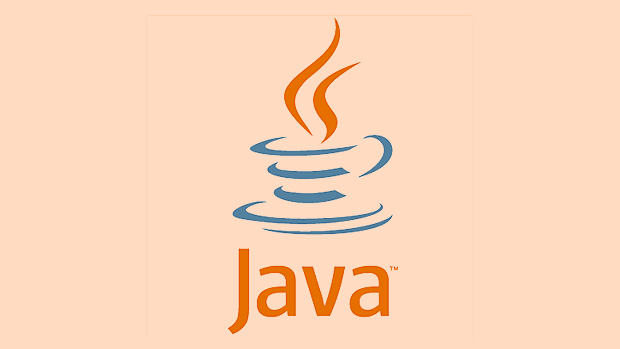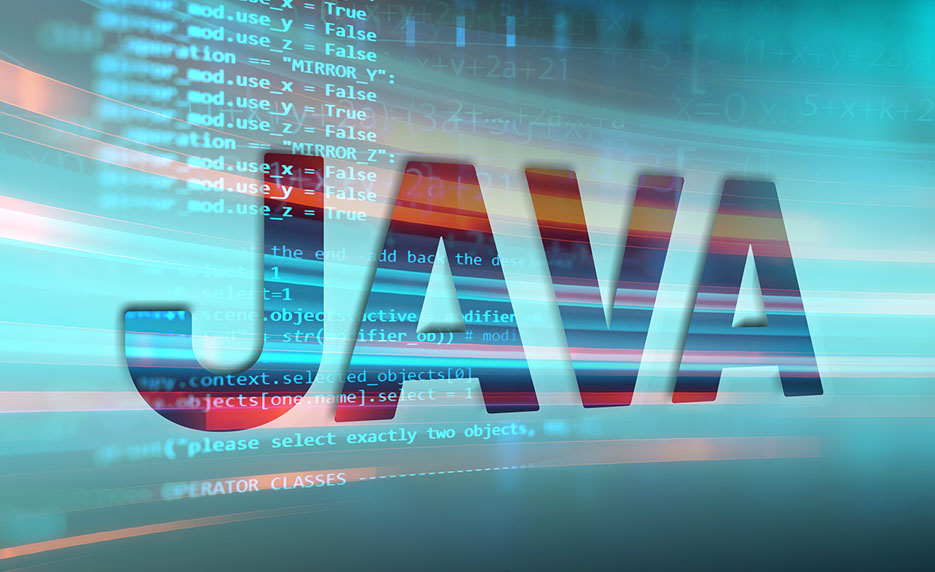GraalVM Native Image is a technology that compiles Java applications into native machine code in advance, with faster startup speeds and lower memory footprint. 1. It generates executable files through static analysis without the need for a JVM running environment; 2. The construction steps include installing GraalVM, installing native-image plug-in, preparing executable JAR and running native-image commands; 3. Pay attention to the characteristics of reflection, dynamic proxy, etc. that require manual configuration or tool support; 4. It is recommended to use a lightweight framework and control dependencies to improve construction efficiency and compatibility.

Java is usually executed in the way that bytecode is run on the JVM, but if you want faster startup speeds and a smaller memory footprint, you can consider using GraalVM's AOT (Ahead-Of-Time) compilation capabilities to generate a native image (Native Image). This method compiles Java applications into platform-related binary executables in advance, skipping the runtime JIT compilation process.

What is GraalVM Native Image?
GraalVM Native Image is a technology provided by GraalVM that directly compiles it into native machine code by statically analyzing your Java or Kotlin-based applications. The generated executable files can be run in an environment without a JVM, and have extremely fast startup time and lower runtime memory overhead.
This is very useful in some cold boot-sensitive scenarios (such as Serverless architecture, CLI tools, etc.). It should be noted, however, that this compilation method does not support all JVM functions, such as some reflection operations that need to be explicitly configured at build time.

How to build a Native Image?
To use GraalVM Native Image, you first need to install GraalVM and configure the environment. Then you can build it through the native-image command:
-
Install GraalVM and Native Image plug-in

- Download and install GraalVM (such as Oracle GraalVM or Mandrel)
- Install the Native Image plug-in:
gu install native-image
-
Prepare your Java project
- Use Maven or Gradle to build an executable JAR
- Make sure the main class is specified correctly
-
Execute the native-image command
native-image -H:Name=myapp -H:Class=com.example.Main -jar your-app.jar
This command will generate an executable file called myapp . The entire process can take several minutes, depending on the project size and complexity.
Frequently Asked Questions and Precautions
Reflection processing
Native Image does not automatically recognize all reflection calls when built, so you must provide this information manually or use an automatic configuration tool such as Spring Native to generate the configuration.
You can declare which classes need reflection support by creating a reflect-config.json file:
[
{
"name": "com.example.MyClass",
"allDeclaredConstructors": true,
"allPublicMethods": true
}
]Then add parameters when building:
--configurations=reflect-config.json
Dynamic proxy and resource loading
If your application uses dynamic proxy (such as Spring AOP), resource file reading (such as ClassLoader.getResource() ), additional configuration or modification of the code is also required to adapt to the limitations of Native Image.
Building performance and dependency management
The process of building native mirrors is time-consuming, especially for large projects. It is recommended to use lightweight frameworks (such as Micronaut, Quarkus) to reduce build time and memory usage.
Also, try to avoid introducing unnecessary third-party libraries, as they may increase build complexity and potential compatibility issues.
Basically that's it
GraalVM's Native Image technology does bring a lot of benefits, especially in terms of startup performance. But at the same time, we should also pay attention to its limitations, especially in reflection, dynamic class loading, etc. For new projects, if the goal is to generate native executables, it is best to choose a framework that supports Native Image, such as Quarkus or Micronaut, which can save a lot of post-tuning efforts.
The above is the detailed content of Java AOT Compilation with GraalVM Native Image. For more information, please follow other related articles on the PHP Chinese website!

Hot AI Tools

Undress AI Tool
Undress images for free

Undresser.AI Undress
AI-powered app for creating realistic nude photos

AI Clothes Remover
Online AI tool for removing clothes from photos.

Clothoff.io
AI clothes remover

Video Face Swap
Swap faces in any video effortlessly with our completely free AI face swap tool!

Hot Article

Hot Tools

Notepad++7.3.1
Easy-to-use and free code editor

SublimeText3 Chinese version
Chinese version, very easy to use

Zend Studio 13.0.1
Powerful PHP integrated development environment

Dreamweaver CS6
Visual web development tools

SublimeText3 Mac version
God-level code editing software (SublimeText3)
 Asynchronous Programming Techniques in Modern Java
Jul 07, 2025 am 02:24 AM
Asynchronous Programming Techniques in Modern Java
Jul 07, 2025 am 02:24 AM
Java supports asynchronous programming including the use of CompletableFuture, responsive streams (such as ProjectReactor), and virtual threads in Java19. 1.CompletableFuture improves code readability and maintenance through chain calls, and supports task orchestration and exception handling; 2. ProjectReactor provides Mono and Flux types to implement responsive programming, with backpressure mechanism and rich operators; 3. Virtual threads reduce concurrency costs, are suitable for I/O-intensive tasks, and are lighter and easier to expand than traditional platform threads. Each method has applicable scenarios, and appropriate tools should be selected according to your needs and mixed models should be avoided to maintain simplicity
 Best Practices for Using Enums in Java
Jul 07, 2025 am 02:35 AM
Best Practices for Using Enums in Java
Jul 07, 2025 am 02:35 AM
In Java, enums are suitable for representing fixed constant sets. Best practices include: 1. Use enum to represent fixed state or options to improve type safety and readability; 2. Add properties and methods to enums to enhance flexibility, such as defining fields, constructors, helper methods, etc.; 3. Use EnumMap and EnumSet to improve performance and type safety because they are more efficient based on arrays; 4. Avoid abuse of enums, such as dynamic values, frequent changes or complex logic scenarios, which should be replaced by other methods. Correct use of enum can improve code quality and reduce errors, but you need to pay attention to its applicable boundaries.
 Understanding Java NIO and Its Advantages
Jul 08, 2025 am 02:55 AM
Understanding Java NIO and Its Advantages
Jul 08, 2025 am 02:55 AM
JavaNIO is a new IOAPI introduced by Java 1.4. 1) is aimed at buffers and channels, 2) contains Buffer, Channel and Selector core components, 3) supports non-blocking mode, and 4) handles concurrent connections more efficiently than traditional IO. Its advantages are reflected in: 1) Non-blocking IO reduces thread overhead, 2) Buffer improves data transmission efficiency, 3) Selector realizes multiplexing, and 4) Memory mapping speeds up file reading and writing. Note when using: 1) The flip/clear operation of the Buffer is easy to be confused, 2) Incomplete data needs to be processed manually without blocking, 3) Selector registration must be canceled in time, 4) NIO is not suitable for all scenarios.
 How Java ClassLoaders Work Internally
Jul 06, 2025 am 02:53 AM
How Java ClassLoaders Work Internally
Jul 06, 2025 am 02:53 AM
Java's class loading mechanism is implemented through ClassLoader, and its core workflow is divided into three stages: loading, linking and initialization. During the loading phase, ClassLoader dynamically reads the bytecode of the class and creates Class objects; links include verifying the correctness of the class, allocating memory to static variables, and parsing symbol references; initialization performs static code blocks and static variable assignments. Class loading adopts the parent delegation model, and prioritizes the parent class loader to find classes, and try Bootstrap, Extension, and ApplicationClassLoader in turn to ensure that the core class library is safe and avoids duplicate loading. Developers can customize ClassLoader, such as URLClassL
 Handling Common Java Exceptions Effectively
Jul 05, 2025 am 02:35 AM
Handling Common Java Exceptions Effectively
Jul 05, 2025 am 02:35 AM
The key to Java exception handling is to distinguish between checked and unchecked exceptions and use try-catch, finally and logging reasonably. 1. Checked exceptions such as IOException need to be forced to handle, which is suitable for expected external problems; 2. Unchecked exceptions such as NullPointerException are usually caused by program logic errors and are runtime errors; 3. When catching exceptions, they should be specific and clear to avoid general capture of Exception; 4. It is recommended to use try-with-resources to automatically close resources to reduce manual cleaning of code; 5. In exception handling, detailed information should be recorded in combination with log frameworks to facilitate later
 How does a HashMap work internally in Java?
Jul 15, 2025 am 03:10 AM
How does a HashMap work internally in Java?
Jul 15, 2025 am 03:10 AM
HashMap implements key-value pair storage through hash tables in Java, and its core lies in quickly positioning data locations. 1. First use the hashCode() method of the key to generate a hash value and convert it into an array index through bit operations; 2. Different objects may generate the same hash value, resulting in conflicts. At this time, the node is mounted in the form of a linked list. After JDK8, the linked list is too long (default length 8) and it will be converted to a red and black tree to improve efficiency; 3. When using a custom class as a key, the equals() and hashCode() methods must be rewritten; 4. HashMap dynamically expands capacity. When the number of elements exceeds the capacity and multiplies by the load factor (default 0.75), expand and rehash; 5. HashMap is not thread-safe, and Concu should be used in multithreaded
 Explained: Java Polymorphism in Object-Oriented Programming
Jul 05, 2025 am 02:52 AM
Explained: Java Polymorphism in Object-Oriented Programming
Jul 05, 2025 am 02:52 AM
Polymorphism is one of the core features of Java object-oriented programming. Its core lies in "one interface, multiple implementations". It implements a unified interface to handle the behavior of different objects through inheritance, method rewriting and upward transformation. 1. Polymorphism allows the parent class to refer to subclass objects, and the corresponding methods are called according to the actual object during runtime; 2. The implementation needs to meet the three conditions of inheritance relationship, method rewriting and upward transformation; 3. It is often used to uniformly handle different subclass objects, collection storage and framework design; 4. When used, only the methods defined by the parent class can be called. New methods added to subclasses need to be transformed downward and accessed, and pay attention to type safety.
 Effective Use of Java Enums and Best Practices
Jul 07, 2025 am 02:43 AM
Effective Use of Java Enums and Best Practices
Jul 07, 2025 am 02:43 AM
Java enumerations not only represent constants, but can also encapsulate behavior, carry data, and implement interfaces. 1. Enumeration is a class used to define fixed instances, such as week and state, which is safer than strings or integers; 2. It can carry data and methods, such as passing values ??through constructors and providing access methods; 3. It can use switch to handle different logics, with clear structure; 4. It can implement interfaces or abstract methods to make differentiated behaviors of different enumeration values; 5. Pay attention to avoid abuse, hard-code comparison, dependence on ordinal values, and reasonably naming and serialization.







